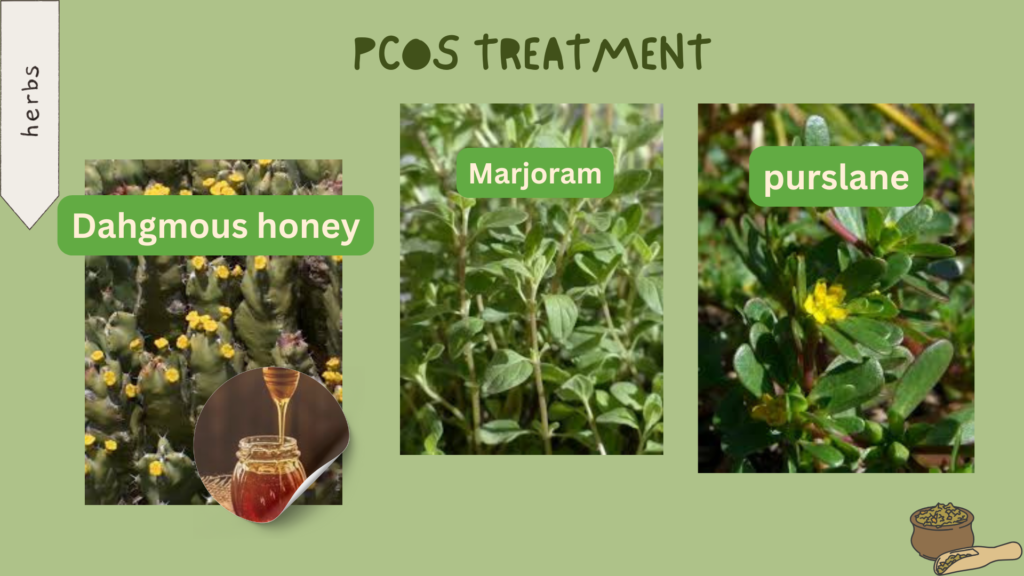The Magic Cure for PCOS: From Symptoms to Solutions
PCOS is a condition in which the ovaries produce an excess of androgens (male hormones) and may develop multiple small fluid-filled sacs (cysts) that can interfere with normal ovulation.
Polycystic ovary syndrome symptoms:
Polycystic Ovary Syndrome (PCOS) can present a variety of symptoms, which may vary from person to person. Here are some common symptoms:
Insulin Resistance: This can lead to increased blood sugar levels, which may contribute to the development of type 2 diabetes.
Irregular Menstrual Cycles: Infrequent, irregular, or prolonged menstrual periods are a hallmark of PCOS.
Weight Gain: Many individuals with PCOS experience weight gain or obesity, particularly around the abdomen.
Excess Androgen Levels: Elevated levels of male hormones can lead to symptoms such as:
- Hirsutism (excessive hair growth on the face, chest, and back)
- Acne Oily skin
- Male-pattern baldness or thinning hair
Polycystic Ovaries: Enlarged ovaries containing numerous small fluid-filled sacs (follicles) can be observed through an ultrasound.
Skin Issues: Dark patches of skin (acanthosis nigricans) may appear, usually in skin folds such as the neck, armpits, and groin.
Mood Changes: Anxiety, depression, and mood swings can also occur in those with PCOS.
Fertility Issues: Difficulty conceiving or infertility can be a significant concern due to irregular ovulation.
How Polycystic Ovary Syndrome (PCOS) is Diagnosed?
Diagnosing Polycystic Ovary Syndrome (PCOS) typically involves a combination of clinical evaluations, medical history, and specific tests. Here’s an overview of the diagnostic process:
1. Medical History Symptoms: The healthcare provider will ask about your menstrual cycle patterns, weight changes, and any symptoms like hirsutism (excessive hair growth), acne, or hair thinning. Family History: A family history of PCOS or related conditions may also be considered.
2. Physical Examination: A physical exam may include checking for signs of excess androgens, such as: Hirsutism Acne Oily skin Hair thinning The provider may also assess body mass index (BMI) and waist circumference.
3. Blood Tests: Blood tests may be conducted to:
- Measure Hormone Levels: Testing for elevated levels of androgens (such as testosterone) and other hormones (like luteinizing hormone (LH) and follicle-stimulating hormone (FSH)).
- Check for Insulin Resistance: Blood glucose and insulin levels may be tested to assess insulin sensitivity and identify potential metabolic issues.
- Evaluate Lipid Levels: Checking cholesterol and triglyceride levels to assess cardiovascular risk.
4. Ultrasound Imaging Transvaginal Ultrasound: An ultrasound may be performed to visualize the ovaries and check for the presence of multiple cysts. Typically, at least 12 follicles in each ovary or an enlarged ovary (more than 10mL) is indicative of PCOS.
5. Exclusion of Other Conditions The healthcare provider may conduct tests to rule out other conditions that can cause similar symptoms, such as thyroid disorders, adrenal gland disorders, or other types of hormonal imbalances.
6. Diagnosis Criteria PCOS is commonly diagnosed using the Rotterdam criteria, which require the presence of at least two of the following three features: Irregular or absent menstrual periods. Signs of excess androgens (clinical or biochemical). Polycystic ovaries observed on ultrasound.
Pcos treatment: The magic Natural Cure for PCOS and PCOD:
To effectively treat PCOS, we must first understand that this condition is closely linked to our daily nutrition. To ensure that any treatment works effectively, it is essential to maintain a diet low in sugars and dairy products. This way, the natural remedies can be more effective.
The magic cure consists of natural herbs combined with Dhagmos Honey, specifically Marjoram and Purslane. Before discussing how to use these herbs, let’s explore why they are effective in treating PCOS naturally.
Marjoram is known for its potential to balance hormones, reduce inflammation, and provide antioxidant support. On the other hand, Purslane is rich in omega-3 fatty acids and antioxidants, making it effective in combating inflammation and supporting insulin sensitivity. Its low-calorie, high-nutrient profile also aids in weight management, which is crucial for many individuals with PCOS.
How to Use the Magic Cure for Polycystic Ovary Syndrome ?
First of all, make sure you are committed to starting a diet low in sugars and dairy products, and let the magic cure do its work!
All you need are 3 ingredients: Dhagmos Honey, Marjoram, and Purslane. Ensure that you purchase them from an authentic source.
For 30 days, take one small spoon of marjoram, one spoon of purslane, and one small spoon of Dhagmos Honey, and mix them in a large cup of warm water. Be sure to cover the cup to retain all the benefits while the ingredients infuse their properties into the water. Then, drink the infused water as a tisane every day before going to bed.
Precautions for Use: Do not use purslane if you have high blood pressure. Additionally, avoid using the magic cure during menstruation.
Signs You No Longer Have PCOS
Signs that you no longer have Polycystic Ovary Syndrome (PCOS) include the regularity of menstrual cycles, which typically occur every 21 to 35 days, indicating improved hormonal balance.
Blood tests may show normal androgen levels, while a reduction in symptoms such as hirsutism and acne suggests better hormonal regulation.
Achieving and maintaining a healthy weight can lead to improved insulin sensitivity and more regular ovulation, potentially enhancing fertility. Additionally, follow-up ultrasounds may reveal a reduction in the size or absence of ovarian cysts, further indicating improved ovarian health.

